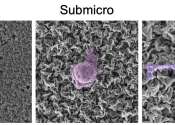Researchers discover new family of bacteria with high pharmaceutical potential
Most antibiotics used in human medicine originate from natural products derived from bacteria and other microbes. Novel microorganisms are therefore a promising source of new active compounds, also for the treatment of diseases ...







